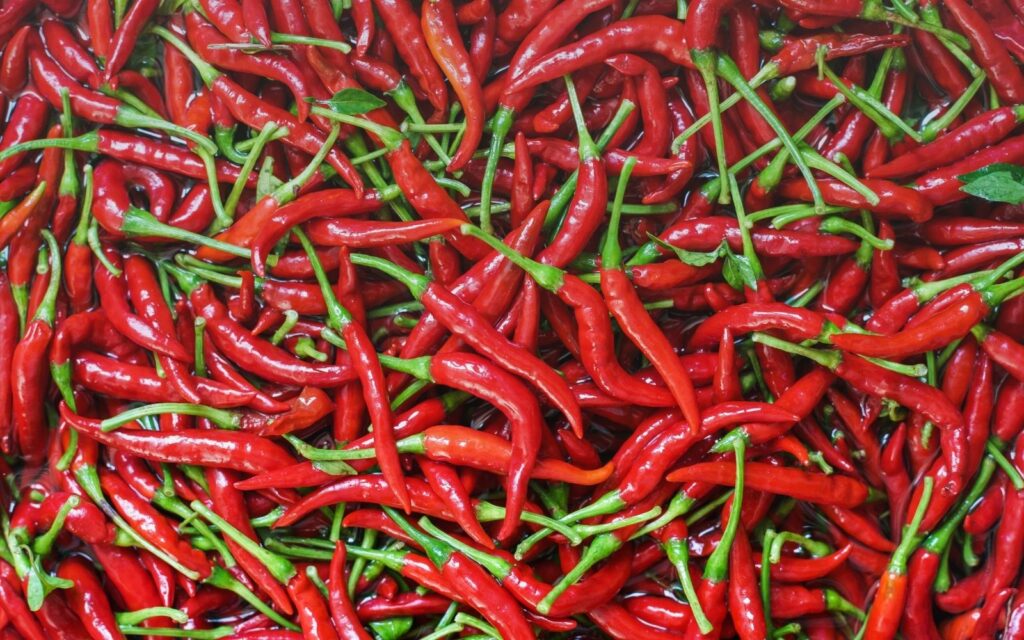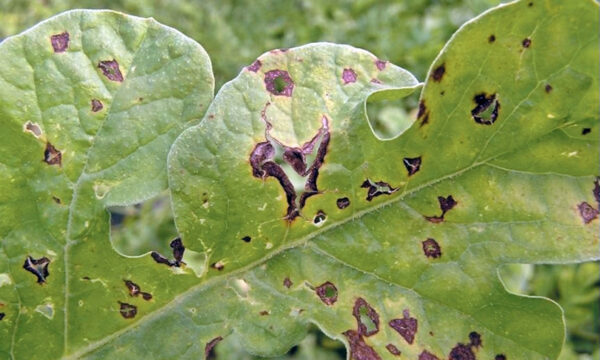Chilli pests and diseases can considerably impact crop production. Not only can pest and disease outbreaks lead to severe yield losses, but they also reduce quality and lower market value. In many countries, including India, Bangladesh, Malawi, and Thailand, chilli is a vital cash and export crop contributing significantly to livelihoods and local economies. Effective and early pest and disease management is essential to protect this valuable crop and support sustainable farming.

In this blog, we’ll explore five major chilli pests and diseases.
Chilli black thrips
Chilli black thrips are notorious for their aggressive feeding habits and rapid reproduction. As a result, these tiny black invasive pests are responsible for considerable economic losses.
The adult thrips mostly gather on flowers and the undersides of leaves, while the nymphs stay only on the undersides. Both adults and young nymphs harm plants by scraping and sucking the sap. Infestations can slow plant growth, cause flowers to fall off, and reduce the development of fruits.
Chilli black thrips are challenging to manage due to their rapid life cycle and high reproductive rate, which can render traditional control methods ineffective. Overreliance on chemical pesticides often leads to resistance. An Integrated Pest Management (IPM) approach—combining biological, cultural, mechanical, and targeted chemical methods—is essential for sustainable control.
Learn more about the prevention, monitoring and control of chilli black thrips.
Fusarium wilt on chilli
Fusarium is a severe soil-borne fungal disease that causes wilting and drying of chilli plants, often leading to 20–30% yield losses. It spreads rapidly through water flow, rain splash, and the movement of infected soil, plant debris, or untreated seeds.
Because the pathogen persists in the soil, controlling Fusarium can be particularly challenging and requires an integrated approach. Certified, disease-free seeds are crucial to prevent introduction, and farmers should avoid spreading contaminated soil between fields.
Learn more about the management of Fusarium wilt on chilli
Chilli fruit fly
The chilli fruit fly is a highly damaging pest that can cause significant yield losses. Signs of infestation include a small dimple on the fruit. These dimples are caused when female flies lay eggs just beneath the fruit’s skin. Once hatched, maggots burrow into the fruit, often feeding on the core or inner walls.
Infested fruits may ripen prematurely, become soft, and develop visible soft spots. The cap often separates easily from the fruit due to internal damage. Maggots remain inside for 2–3 weeks before dropping to the soil to pupate. Even a single maggot can ruin an entire chilli, making early detection and control essential for protecting crops.
Learn more about the management of chilli fruit fly
Chilli collar rot
Chilli collar rot is a serious disease caused by a fungus-like organism that thrives in warm, wet, and poorly drained conditions. It starts with stem rot near the ground, leading to wilting and plant death, especially during fruiting. Infected chillis show dark, wet spots with white fungal growth and remain shrivelled on the plant. The disease spreads through soil, infected seeds, and water and can affect other crops like tomato and aubergine.
Resistant varieties can be helpful in managing the disease, such as planting on ridges, avoiding poorly drained soils, and rotating with non-host crops for at least three years.
Learn more about the management of chilli collar rot
Anthracnose disease of chilli
Anthracnose is a severe fungal disease in chilli that causes pre- and post-harvest fruit decay. It appears as small black spots on fruit skin that elongate into elliptical lesions, often bordered by a thick black outline with a lighter centre. The disease thrives in high humidity, especially when rains occur during fruit ripening, and is most common on mature fruits.
Management of anthracnose includes using disease-free seeds or transplants, removing infected plants early, ensuring good drainage, and keeping nursery beds free of standing water and plant debris.
Learn more about the management of anthracnose disease of chilli
Further information on the management of chilli pests and diseases
Early detection of chilli pests and diseases is essential to prevent crop loss and ensure healthy yields. Regular field monitoring, good agronomic practices, and timely management can make a significant difference. For more information, visit the PlantwisePlus Knowledge Bank, where you can access detailed resources and use the diagnostic tool to help identify symptoms and find effective control measures.
Further reading
Related News & Blogs
Using chilli pepper extract to manage insect pests
In the search for economical and environmentally friendly approaches to pest control, particularly with chemical resistance becoming an increasing issue, biological alternatives can be important. One such solution lies in the humble chilli pepper. The…
24 September 2025




